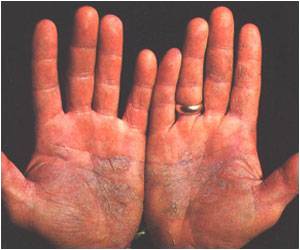Combining micro-needling and cupping, two emerging and alternative techniques, in an experimental study reveals a potential synergy for skin rejuvenation.

Comparison of the Effects of Skin Microneedling with Cupping Therapy and Microneedling Alone: An Experimental Study
Go to source). "Cupping therapy can be added to micro-needling therapy and used to increase certain desired effects on the skin," comments lead author Burak Pasinlioğlu, MD, of Kecioren Research and Training Hospital, Ankara, Turkey. "This combination might provide an easy and effective method to improve skin quality in plastic surgery practice."
Experiments Look at Cellular Effects of Micro-needling Plus Cupping
Micro-needling is a nonsurgical technique that has been used to promote skin regeneration and scar healing. Needles are used to create tiny channels in the skin, to induce collagen and other healing factors. "Many studies have demonstrated that micro-needling has significant benefits for skin regeneration and scar healing," Dr. Pasinlioğlu and coauthors write.‘Simultaneous application of micro-needling and cupping, incorporating emerging and alternative techniques, demonstrates a potential synergistic effect in skin rejuvenation by triggering collagen synthesis and improving tissue perfusion.
#Micro-needling, #Cupping, #Emerging Techniques, #Alternative Techniques, #Skin Rejuvenation
’





Cupping is a centuries-old method of alternative medicine that has been shown to produce beneficial effects on the skin. "These effects are similar to those of negative pressure wound therapy, an approach commonly used in plastic surgery," according to the authors. They designed an experimental study to examine the effects of adding cupping therapy to micro-needling. In the study, the researchers performed a single session of micro-needling on the skin of anesthetized rats. One group of animals underwent micro-needling alone, while the other group underwent micro-needling followed by a brief session of cupping. Cupping consisted of applying gentle negative pressure (suction) on the treated skin.
Other animals underwent three sessions of treatment with micro-needling, alone or followed by cupping.
The goal of the procedures, alone or in combination, was to trigger inflammation and blood supply (vascularization). After four weeks of healing, cellular-level skin changes were compared for rats undergoing micro-needling alone or micro-needling plus cupping.
Significant Increases in Skin Thickness and Collagen Levels
The results showed significant improvement in skin thickness. In the outer layer of the skin (epidermis), thickness increased from about 24 micrometers (μm) with one session of micro-needling alone to 42 μm with micro-needling plus cupping.Cupping was also associated with increased thickness of the dermis, the skin layer beneath the epidermis. There was no further increase in skin thickness with three sessions compared to one session of treatment.
Advertisement
The ratio of type 1 to type 3 collagen also increased – a high percentage of type 1 collagen is characteristic of younger skin, the researchers note. Percentages of type 1 and 3 collagen were not significantly affected by adding cupping to micro-needling.
Advertisement
Reference:
- Comparison of the Effects of Skin Microneedling with Cupping Therapy and Microneedling Alone: An Experimental Study - (https://journals.lww.com/plasreconsurg/Fulltext/2023/06000/Comparison_of_the_Effects_of_Skin_Micro-needling.22.aspx)








